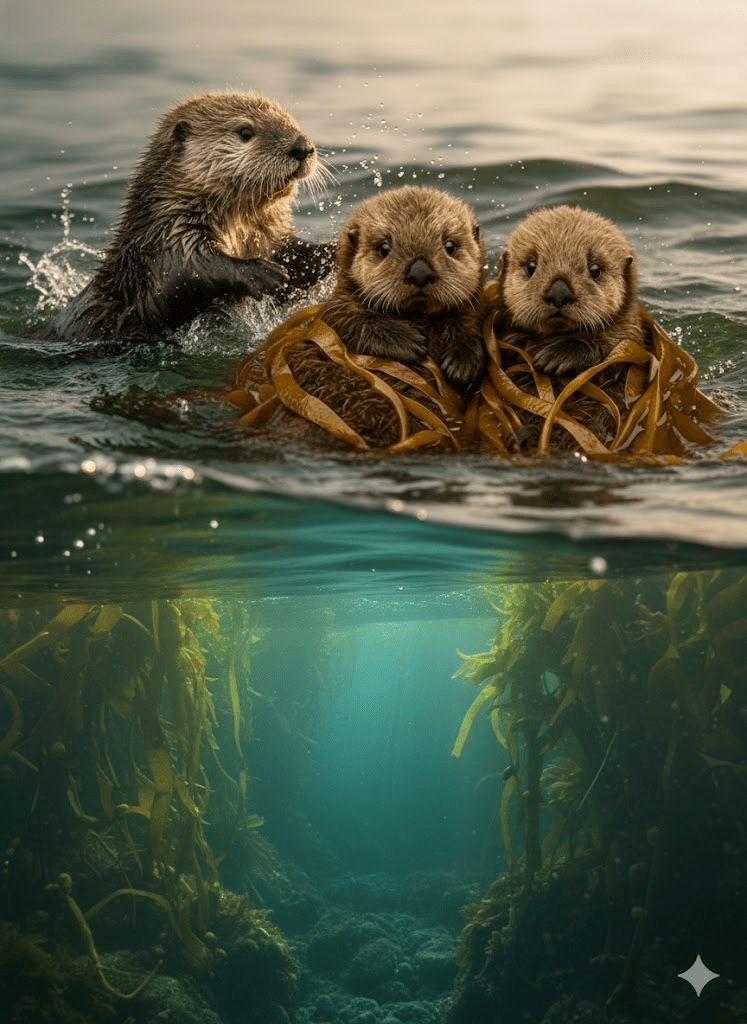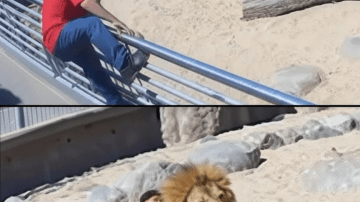The tranquil waters off the coast of Monterey Bay usually hum with a predictable rhythm, a ballet of marine life playing out its ancient roles. Yet, one crisp morning, the usual calm was subtly disturbed, not by a storm or a passing whale, but by a scene of unexpected tenderness and subtle drama. A lone sea otter mother, known to local researchers as “Elara,” was observed performing the age-old ritual of securing her newborn pup within a protective embrace of kelp. What made this particular instance remarkable, however, was not just the single tiny bundle nestled in the golden-brown fronds, but the faint, almost imperceptible wiggle just beside it—a secondary movement that initially escaped the notice of even the most seasoned observers. This was no ordinary birth; Elara, it turned out, had given birth to twins, a rare and challenging event for sea otters, especially when one considers the immense energy demands and the precarious nature of their early lives. The presence of two tiny, vulnerable lives, both utterly dependent on Elara’s ingenuity and strength, immediately elevated a routine observation into a gripping narrative of survival, resilience, and the intricate dance between instinct and environment.

Elara, typically a meticulous hunter, faced an immediate dilemma. Her instinct was to dive for the caloric sustenance vital for lactation, but leaving two buoyant, helpless pups unwrapped was unthinkable. With a swiftness born of urgency, she gathered more kelp, her paws deftly weaving the flexible blades into a double-layered basket. The first pup, “Kelp,” was secured quickly, its fluffy coat creating an almost comical buoyancy. The second, smaller twin, “Fern,” proved more challenging. Just as Elara nudged Fern into place, a rogue wave, a remnant from a distant storm, swept through the kelp bed, momentarily dislodging the delicate bundle.







